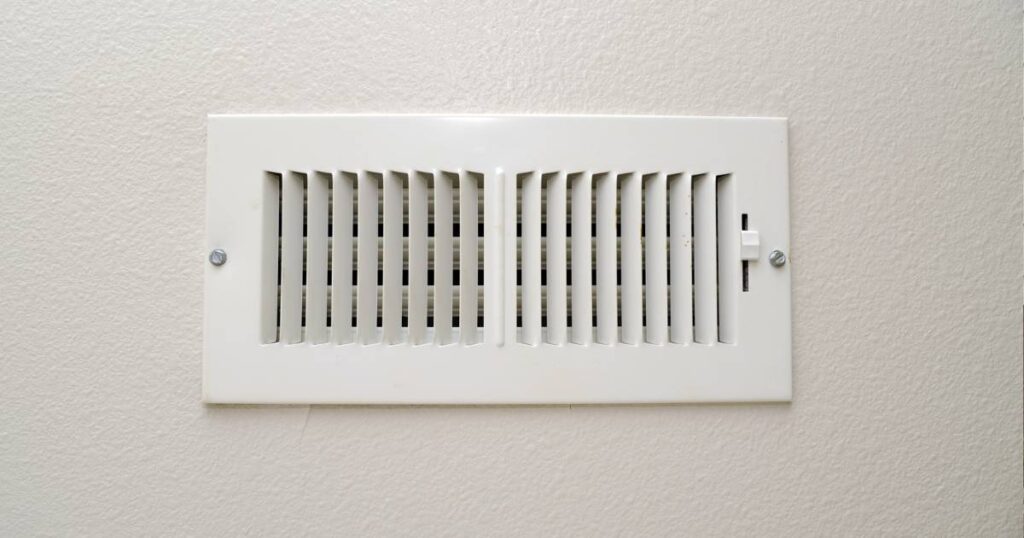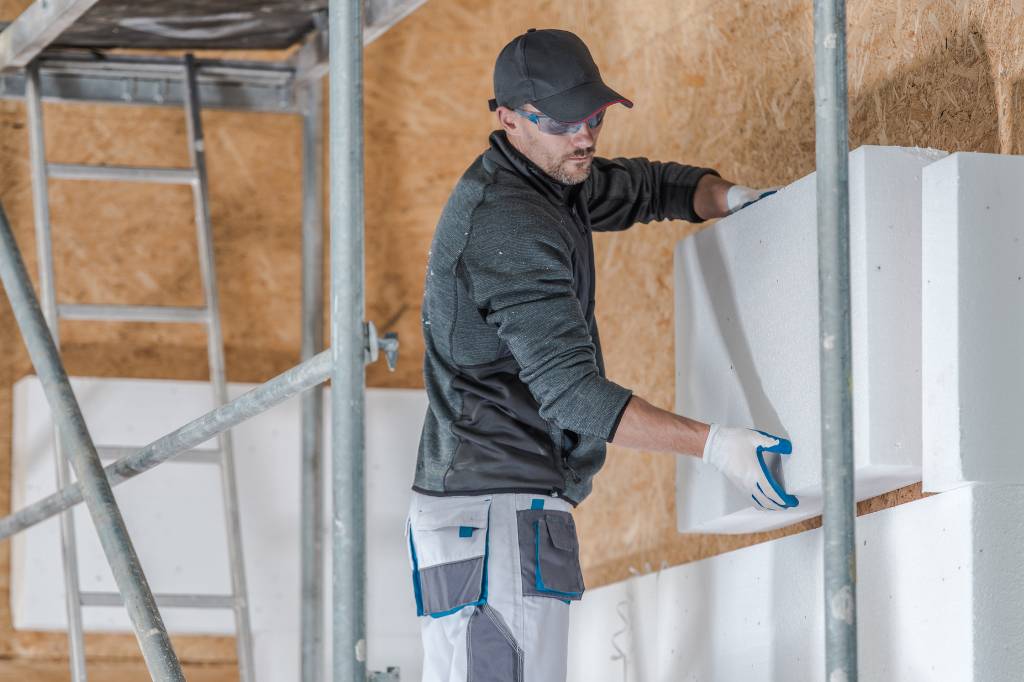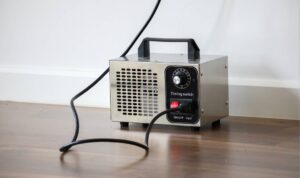Importance of cooling the attic
Cooling the attic is crucial for maintaining the integrity of the roof, reducing utility bills, and improving overall comfort in the home. By reducing the attic temperature, it prevents damage to the roof caused by excessive heat, which can lead to shingle degradation and premature aging. Lower attic temperatures also decrease the workload on air conditioning systems, resulting in lower energy consumption and reduced utility bills.
An overheated attic can have negative effects on a home, such as causing structural damage, including warping of the roof deck and rafters. Additionally, excess attic heat can seep into the living space, making the home uncomfortable and increasing the need for air conditioning.
By implementing attic cooling measures, such as proper ventilation and insulation, homeowners can also indirectly cool their living space. This can lead to a more comfortable indoor environment and further reduce energy costs.
Overall, cooling the attic is essential for maintaining the structural integrity of the home, reducing utility bills, and improving overall comfort for inhabitants.

Understanding Attic Heat
Understanding the impact of attic heat on your home’s energy efficiency and comfort is essential for homeowners. A well-insulated and ventilated attic spaces can help regulate the indoor temperature, reduce energy costs, and prolong the lifespan of your roof. This article will cover the causes of attic heat, the importance of proper insulation and ventilation, and practical tips for minimizing the heat buildup in your attic. By gaining a better understanding of attic heat, you can make informed decisions about improving your home’s energy efficiency and creating a more comfortable living environment for you and your family.
The science behind attic heat transfer
Attic heat transfer occurs when heat builds up in the attic space and then transfers to the living spaces below. This happens through conduction, convection, and radiation. In the summer, the heat from the attic can increase the temperature in the living areas, causing the air conditioner to work harder to maintain a comfortable temperature. This leads to higher utility costs and increased wear and tear on the air conditioning system.
Insulation and ventilation play a key role in regulating the temperature in the attic. Proper insulation helps to prevent heat from escaping into the attic or entering the living spaces below. Meanwhile, ventilation allows for the release of hot air and the intake of cooler air, thus reducing the heat buildup in the attic.
Addressing attic heat transfer is crucial for better energy efficiency. By effectively managing the temperature in the attic, homeowners can reduce their reliance on air conditioning, leading to lower utility costs and decreased wear and tear on their HVAC systems. Investing in proper insulation and ventilation in the attic can result in significant energy savings and improved comfort throughout the home.
Effects of high attic temperatures on energy costs
High attic temperatures can significantly impact energy costs in several ways. First, when the temperature in the attic is elevated, the need for air conditioning increases as the heat trapped in the attic can radiate into the living space. This forces the air conditioning to work harder to maintain a comfortable temperature, leading to higher energy consumption.
Additionally, high attic temperatures can drive up energy costs by reducing the efficiency of insulation. When the attic is too hot, the insulation in the attic becomes less effective in preventing the transfer of heat into the living space. This means the air conditioning needs to run longer and at higher levels to compensate for the increased heat gain, further increasing energy bills.
Moreover, the increased strain on HVAC systems due to high attic temperatures can result in higher energy costs as the systems have to work harder and consume more energy to cool the living space. With these factors combined, high attic temperatures can have a substantial impact on energy costs, making it important to address and manage attic temperatures to mitigate the financial impact on energy bills.
Proper Attic Ventilation
Proper attic ventilation is essential to maintaining a healthy and efficient home. Without adequate ventilation, heat and moisture can become trapped, leading to a range of problems such as mold and mildew growth, roof damage, and increased energy costs. In this article, we will explore the importance of proper attic ventilation and how it can benefit your home in the long run. We will also discuss the signs of poor ventilation, the different types of attic vents, and the best practices for ensuring your attic is properly ventilated. Whether you are a homeowner or a professional contractor, understanding the importance of proper attic ventilation is crucial for maintaining a comfortable and structurally sound home.
The role of ventilation in cooling the attic
Proper attic ventilation is essential for regulating the temperature in your home and reducing strain on your AC unit. Implementing ventilation techniques such as fans and insulation can greatly improve attic ventilation. Poor ventilation can lead to excessively high attic temperatures, which in turn increases the temperature in your home and puts a strain on your AC unit. Allowing air to circulate in and out of the attic can reduce trapped heat and cool the home more efficiently.
By installing attic fans or vents and ensuring proper insulation, you can effectively reduce the impact of poor ventilation. Attic ventilation not only helps regulate temperatures but also prevents moisture buildup, which can lead to mold and mildew. By allowing air to flow through the attic, you can maintain a more comfortable living environment and reduce energy costs.
In conclusion, proper attic ventilation is crucial for maintaining comfortable temperatures in your home and reducing strain on your AC unit. Implementing ventilation techniques can greatly improve attic ventilation and help reduce trapped heat, ultimately creating a more comfortable and energy-efficient living space.

Why proper ventilation is essential for energy efficiency
Proper ventilation in your attic bedroom is crucial for energy efficiency. By allowing fresh air to circulate, proper ventilation helps to regulate the temperature in the space, reducing the need for excessive air conditioning and ultimately lowering energy costs. Additionally, it plays a significant role in preventing moisture buildup and mold growth, which can lead to costly repairs and potential health hazards.
Investing in energy-efficient ventilation systems can further enhance the benefits. These systems not only help to maintain the temperature and reduce moisture, but they also improve indoor air quality and overall comfort. By effectively removing stale air and replacing it with fresh air, energy-efficient ventilation systems contribute to a healthier living environment.
In conclusion, proper ventilation is vital for both energy efficiency and the overall well-being of your attic bedroom. It’s an investment that not only saves on energy costs but also avoids potential damage and health issues associated with poor ventilation.
Types of attic vents: ridge vents, gable vents, soffit vents
Attic vents play a crucial role in maintaining proper airflow and ventilation in the attic, which helps regulate the temperature and moisture levels. There are several types of attic vents, each with its own specific function and benefits.
Ridge vents are installed along the peak of the roof, allowing hot air to escape from the top of the attic while drawing in cooler air from the eaves. This type of vent promotes consistent airflow and is ideal for hot and humid climates.
Gable vents are located on the gable ends of the attic and work by allowing air to flow in through the lower portion and out through the top, effectively reducing heat buildup. They are suitable for both hot and cold climates.
Soffit vents are installed under the eaves of the roof, drawing in cool air from outside and pushing out hot air from the attic. They work in conjunction with ridge vents to create a continuous airflow and are beneficial in all climate conditions.
Each type of vent is designed to facilitate proper airflow and ventilation in the attic, helping to regulate temperature and moisture levels for a more comfortable and energy-efficient home. Choosing the right type of vent depends on the specific climate conditions of the area.
Assessing Attic Insulation
When it comes to maintaining the energy efficiency of a home, assessing attic insulation is a crucial task. Proper insulation in the attic helps to prevent heat loss in the winter and heat gain in the summer, ultimately reducing energy costs and keeping the home comfortable year-round. In this article, we will explore the importance of assessing attic insulation, the signs that indicate it may need attention, and the different methods for assessing and improving insulation in this critical area of the home. We will also discuss the potential benefits of updating and maintaining attic insulation, as well as the potential cost savings and environmental impact of doing so. Whether you are a homeowner looking to maximize energy efficiency or a professional in the building or home improvement industry, understanding the significance of assessing attic insulation is essential for creating a more sustainable and comfortable living environment.
Significance of adequate insulation in maintaining a cool attic
Adequate insulation is crucial in maintaining a cool attic and regulating home temperature. Insulation acts as a barrier, preventing heat from radiating into the lower floors of the house, thus reducing the need for the A/C to work as hard. This not only helps maintain a comfortable indoor temperature but also saves on energy costs. In fact, properly insulated attics can save homeowners over 15% on annual energy bills by preventing cool air from escaping into the attic.
In addition to insulation, ventilation also plays a key role in keeping the attic cool. Proper ventilation allows for the circulation of air, preventing the buildup of heat and moisture in the attic. This helps create a more comfortable environment while also preventing potential issues such as mold and moisture damage.
Overall, the combination of adequate insulation and ventilation is essential for maintaining a cool attic and regulating home temperature. By preventing heat from entering the lower floors and allowing for proper air circulation, homeowners can enjoy a comfortable living space while also saving on energy costs.

Checking and improving existing insulation levels
The current insulation levels in my attic are at R-25, which is below the recommended R-value of R-49 to R-60 for my climate. This means that the insulation in my attic is insufficient to effectively keep it cool in the summer months. To improve its effectiveness, I am considering adding more insulation.
When adding more insulation, I will ensure that the material, density, and thickness are suitable for my attic space and climate. It’s important to choose the right type of insulation material, such as fiberglass, cellulose, or spray foam, based on my specific climate and needs. Additionally, the density and thickness of the insulation will be carefully selected to achieve the recommended R-value for my climate.
By increasing the insulation levels in my attic, I can better regulate the temperature and reduce energy costs. This will also help to create a more comfortable living environment. It’s essential to consider the insulation levels, R-value, and suitability of the material, density, and thickness to ensure that the attic remains cool and energy-efficient.
Installing Radiant Barriers
When it comes to insulating your home, installing radiant barriers can make a significant difference in keeping your living spaces comfortable and energy-efficient (and your hot attic cooler from the summer heat). Radiant barriers are a simple and effective way to reduce the transfer of heat from the sun into your home, resulting in lower energy costs and a more comfortable indoor environment. Whether you are looking to install radiant barriers in your attic, walls, or under your roof, this guide will walk you through the steps and considerations for a successful installation project. From choosing the right materials to understanding the installation process, this comprehensive guide will help you make informed decisions and ensure that your radiant barriers provide maximum benefits for your home. Whether you are a homeowner or a contractor, these tips and guidelines will help you complete the installation with confidence and precision.
How radiant barriers can reduce attic heat gain
Radiant barriers work by reflecting radiant heat, preventing the attic from turning into an oven. When the sun’s rays hit the roof, radiant heat is absorbed by the attic insulation, causing the temperature to rise. However, a radiant barrier, typically made of materials like aluminum foil, can reflect the radiant heat away from the attic, reducing the amount of heat that enters the space. This helps to keep the attic cooler and prevents the transfer of heat into the living spaces below.
Common materials used for radiant barriers include aluminum foil, which is an excellent conductor of heat and reflects up to 97% of radiant heat. Other materials such as foil-faced plywood, plastic film, and reflective insulation also serve the purpose of inhibiting the transfer of heat by reflecting it away from the attic.
In some cases, using multiple radiant barriers can be even more effective in keeping the attic cool and preventing radiant heat from forming in the home. By layering radiant barriers, the reflection of radiant heat can be further increased, providing greater protection against attic heat gain. Using multiple barriers can create an even more effective barrier against heat transfer, ultimately keeping the attic and home cooler.

Different types of radiant barriers available in the market
There are several different types of radiant barriers available in the market, with aluminum foil being the most common and popular option. Other durable materials used for radiant barriers include plastic, cardboard, and plywood.
Radiant barriers work by reflecting sunlight away from the attic, preventing the heat from penetrating the living space below. This helps to keep attics cooler and reduces the workload on air conditioning systems, ultimately leading to lower energy bills. In warmer climates, radiant barriers are particularly effective at reducing the heat gain in homes, making them a popular choice for homeowners looking to improve energy efficiency.
Aluminum foil radiant barriers are widely recognized for their durability and effectiveness in reflecting sunlight. They can be installed in various forms, including rolls, sheets, or panels, making them suitable for different attic configurations. Additionally, other durable materials such as plastic and plywood can also be used as effective radiant barriers, providing homeowners with a range of options to choose from based on their specific needs and preferences.
Utilizing Passive Vents
Passive vents, including gable, soffit, and ridge vents, work together to cool the attic by promoting air circulation. Gable vents are located at the peaks of gable ends, allowing hot air to escape from the attic. Soffit vents are installed under the eaves to draw in cooler air from outside. Ridge vents run along the peak of the roof, providing an additional outlet for hot air to escape.
As the hot air rises, it exits through the gable and ridge vents, while cooler air is drawn in through the soffit vents. This continuous flow of air helps to regulate the temperature in the attic and prevent heat buildup. Additionally, proper insulation in the attic helps to trap cool air inside and prevent heat from entering the space. When combined with passive venting, insulation helps to maintain a consistently cool temperature in the attic.
In summary, passive vents such as gable, soffit, and ridge vents work in conjunction with air circulation and insulation to keep the attic cool. The vents allow for the exchange of hot and cool air, while insulation helps to maintain a stable temperature within the space.
FAQ’S:
How can attic insulation help in keeping it cooler?
Attic insulation acts as a barrier, reducing the amount of heat transferred from the roof to the living space below. This helps maintain a cooler attic temperature.
What is a radiant barrier, and how does it work?
A radiant barrier is a reflective material installed in the attic that reflects heat away from the roof. It prevents radiant energy from penetrating the attic and keeps the space cooler.
Will increasing attic ventilation make a significant difference?
Yes, proper attic ventilation aids in expelling hot air and promotes air circulation, reducing heat buildup. This helps keep the attic cooler and prevents damage such as moisture buildup.
How can I identify and seal air leaks in the attic?
Look for gaps, cracks, or holes where air can enter, such as around pipes, electrical wiring, vents, and light fixtures. Seal these gaps using caulk, expanding foam, or weatherstripping.
Are there any other tips to keep the attic cooler?
- Use light-colored or reflective roofing materials to reduce heat absorption.
- Install attic fans or solar-powered attic ventilation systems.
- Keep attic access doors or hatches sealed and insulated.
- Consider using attic insulation blankets or radiant barrier foil to cover exposed ductwork and pipes.
Should I hire a professional to improve attic cooling?
Depending on your comfort level and expertise, you may choose to hire a professional for proper attic insulation, radiant barrier installation, or attic ventilation enhancements.
Need a professional help? Call Attic Crew today for the best solutions!



